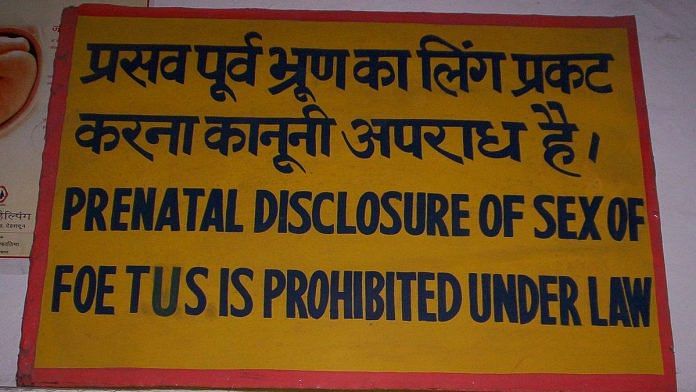New Delhi: A total of 145 doctors have lost their licences in India since the law banning pre-natal sex selection was enacted in 1994, data from the Union Ministry of Health and Family Welfare shows.
The Pre-Conception and Pre-Natal Diagnostic Techniques (Regulation and Prevention of Misuse) Act, 1994, was enacted with the aim of stopping female foeticides and arresting a declining sex ratio in India.
Citing the Sample Registration Survey (SRS) report of 2020 — the Indian government’s large-scale demographic sample survey — Union Health Minister Mansukh Mandaviya said that between 2015 and 2023, convictions under the law increased from 271 to 713 while the total reported cases stood at 3,563.
The minister was speaking at a review meeting for the Central Supervisory Board under the PCPNDT Act.
According to the SRS data, there a significant progress in the sex ratio at birth, up to 907 in 2018-20 from 904 in 2017-19, 898 in 2014-16, and 876 in 2005. Sex ratio at birth is defined in terms of the number of female births per 1,000 male births.
“Importantly, 12 out of 22 surveyed states have demonstrated improvement, underlining the combined efforts of the states in implementing the PCPNDT Act and the Beti Bachao Beti Padhao scheme,” Mandaviya said at the meeting.
The minister also emphasised the challenges posed by technologies such as in-vitro fertilisation (IVF), Non-invasive Prenatal Test (NIPT), and compact diagnostic equipment. “These technologies, despite their positive medical applications, could be misused and exacerbate gender imbalances.”
Significantly, states such as Haryana, Rajasthan, and Tamil Nadu drew the minister’s praise for “proactive measures” — including sting operations and rewards offered for information on the practice of sex determination — to combat gender-biased sex selection, with ministers calling on others to follow suit.
Also Read: It’s girls! Surprise in survey as north India improves in sex ratio at birth, south worsens
Help identify ‘black sheep’, minister urges doctors
At the review meeting, Mandaviya urged the medical community to play a vital role in addressing the issues of skewed child sex ratio and sex ratio at birth by identifying the “black sheep” within their profession. The term child sex ratio is defined as the ratio of males to females per 1,000 population.
According to SRS 2020 data, the sex ratio is better for urban India (910 per 1,000 males) than for the rural parts of the country (907).
Among states, Kerala had the best sex ratio with 974 girls born for every 1,000 boys in 2018-20. This was followed by Chhattisgarh (958) and Himachal Pradesh (950).
Uttarakhand (844), Delhi (860), and Haryana (870) had the worst sex ratios, according to the report.
(Edited by Uttara Ramaswamy)
Also read: Karnataka’s sex ratio at birth plummeting, govt data shows. Not so straightforward, say experts



